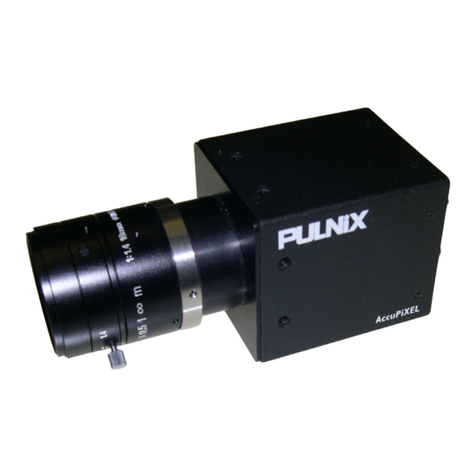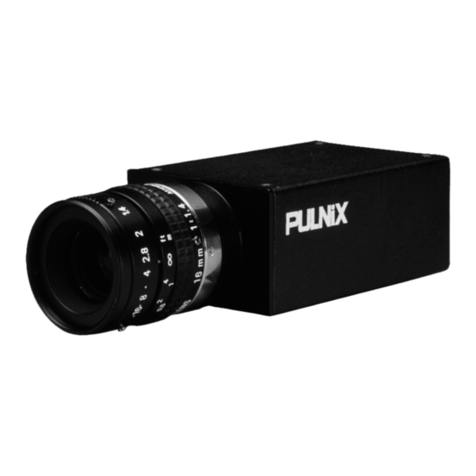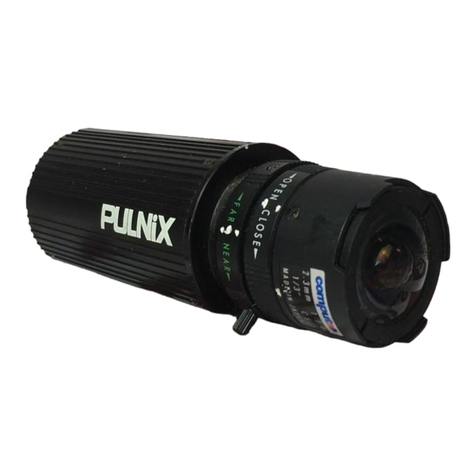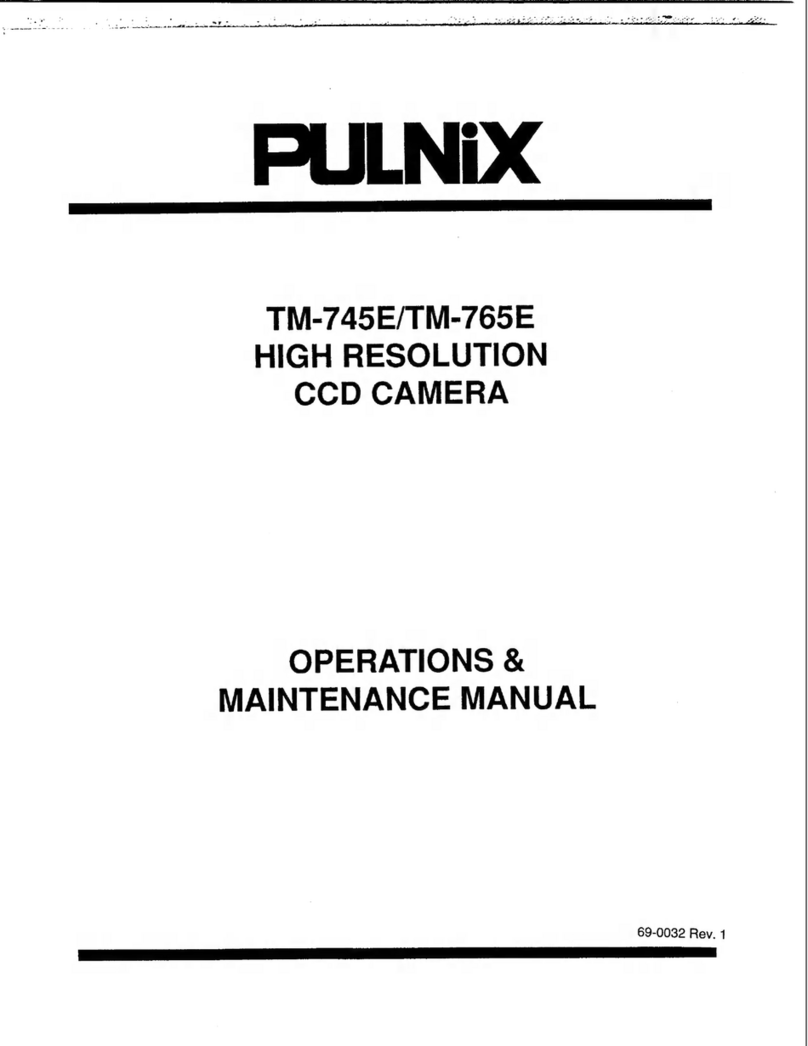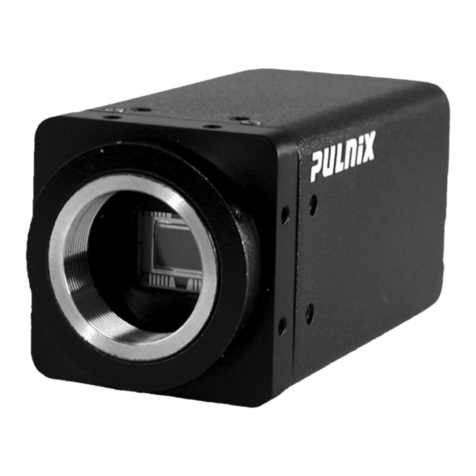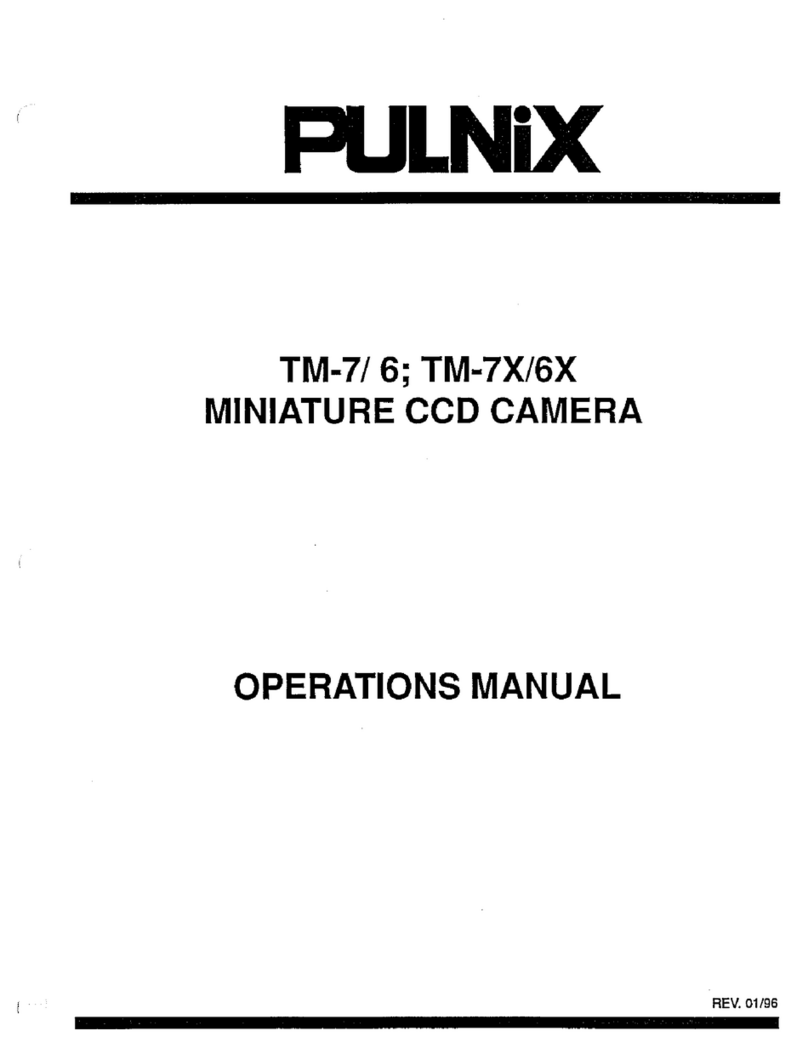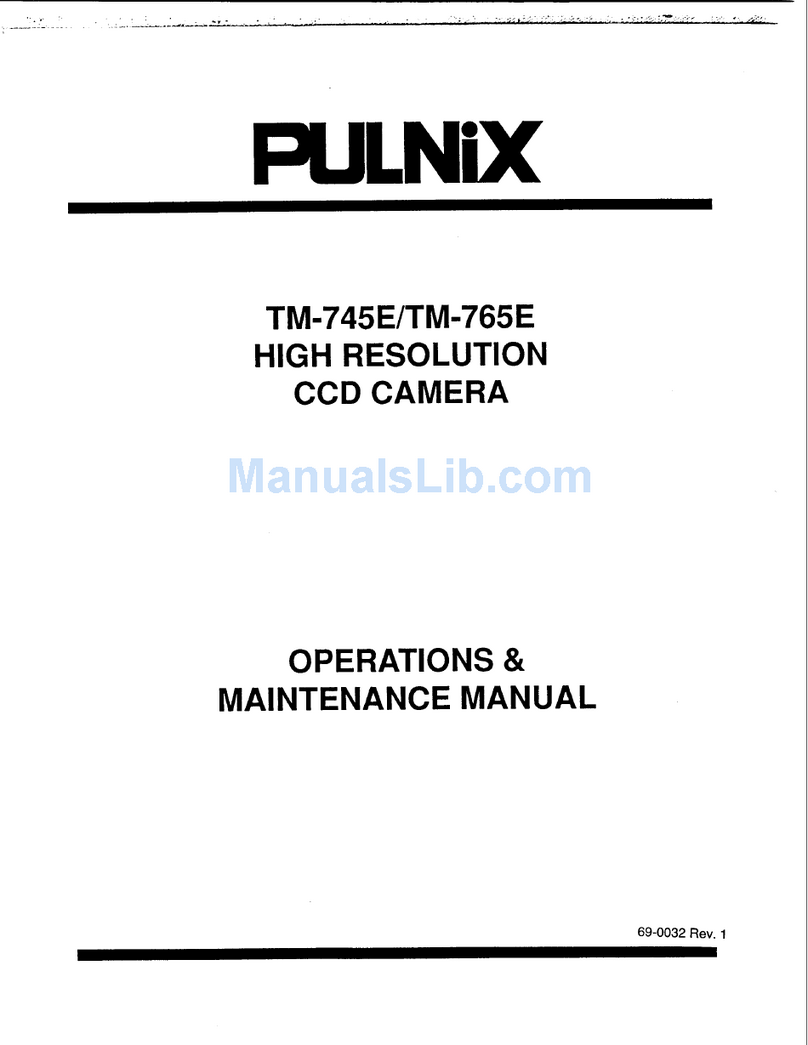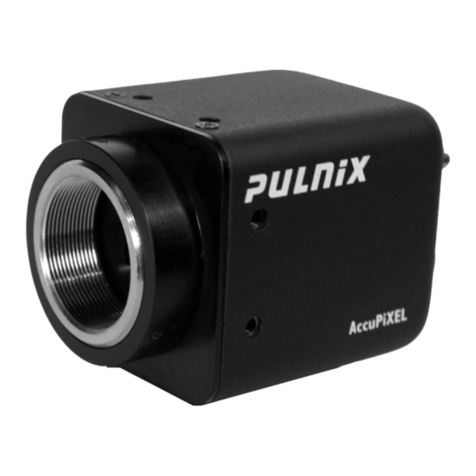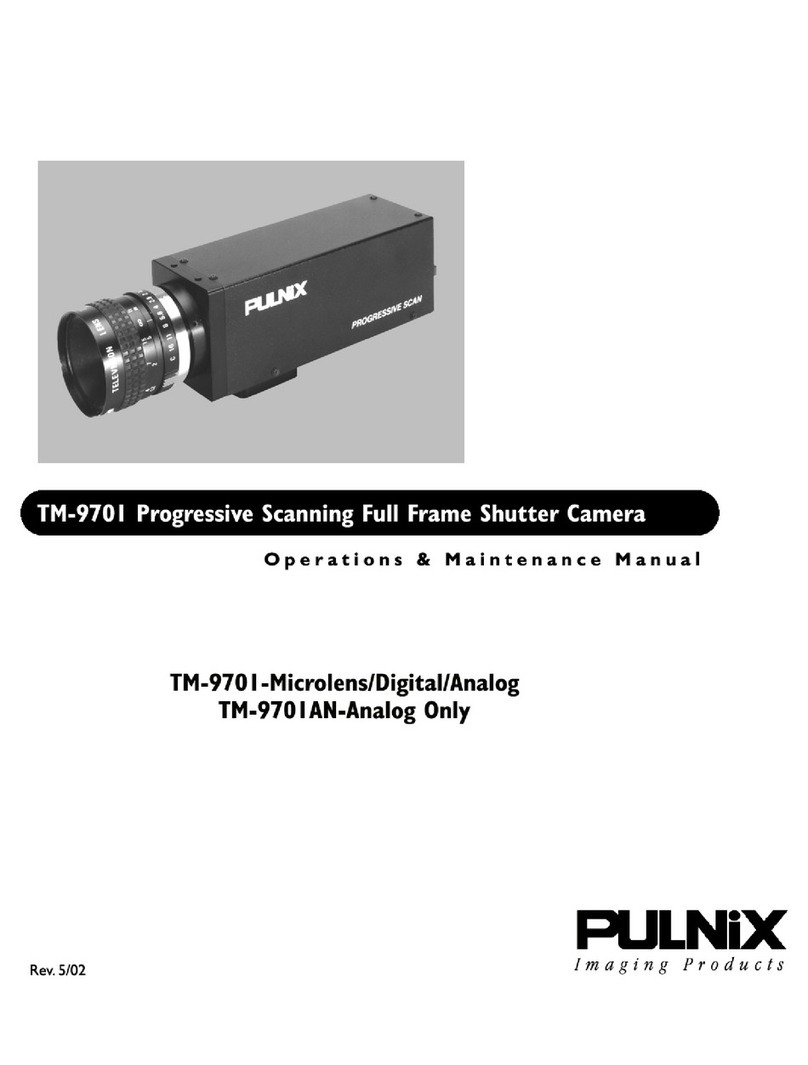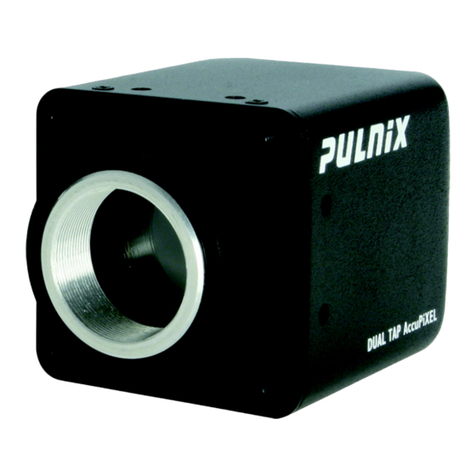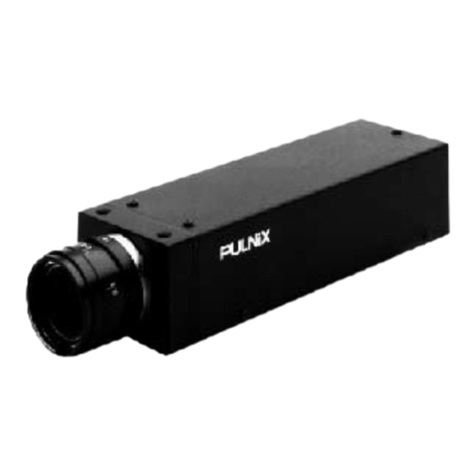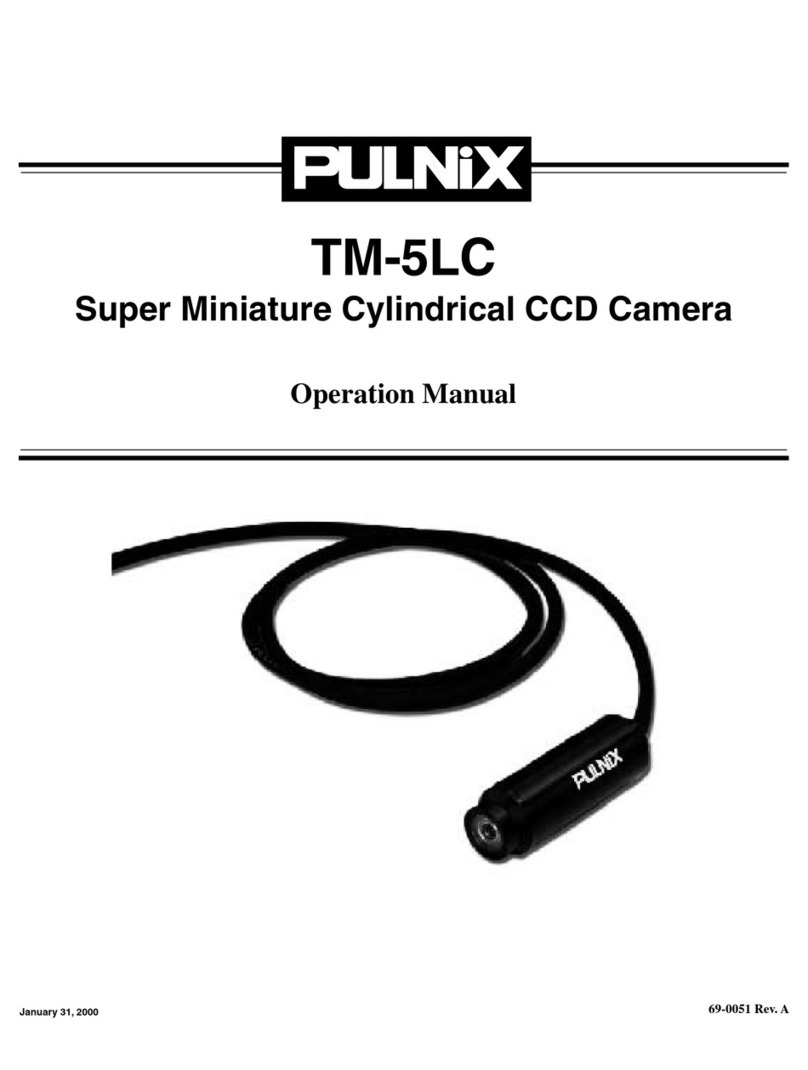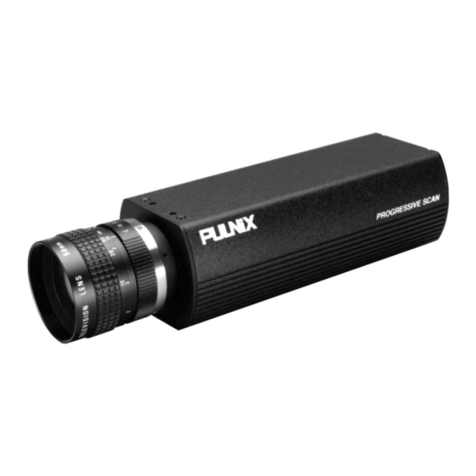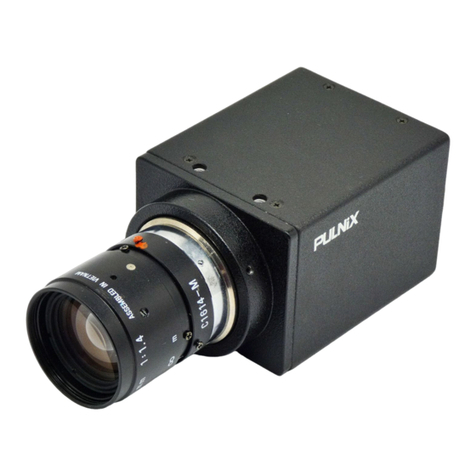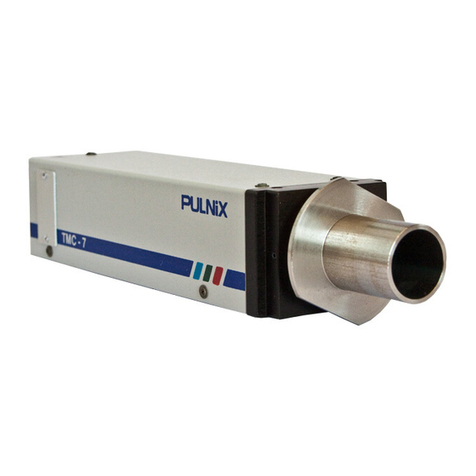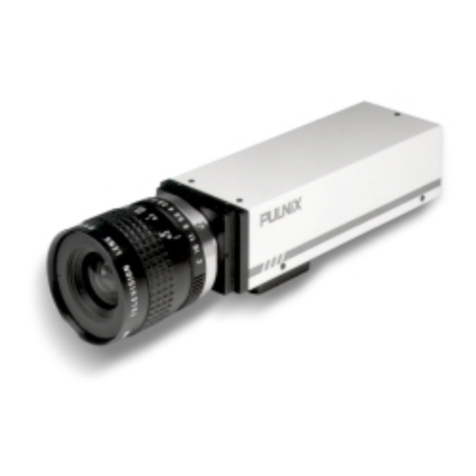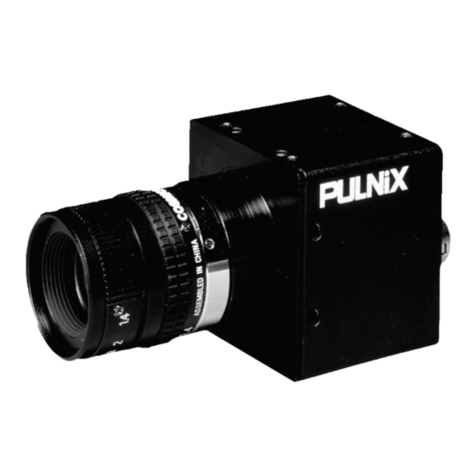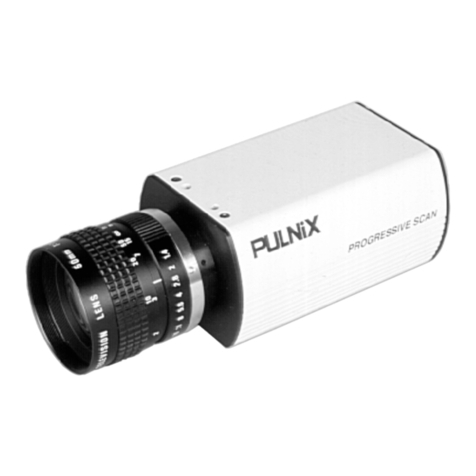SECTION 1
FEATURES AND APPLICATIONS
HIGH RESOLUTION, INTERLINE TRANSFER CCD
The TM-7/TM-6 series are state-of-the-art CCD cam-
eras which use a 1/2 inch high resolution imager.
These units offer outstanding compactness high per-
formance long life high stability as well as a number of
technical innovations such as variable electronic shut-
ter and asynchronous reset. They are designed to be
simple yet high quality cameras for versatile applica-
tions such as machine vision and image processing
robotics medical and surveillance applications. The
uniqueness of the TM-7 series is the size and resolu-
tion which is essential for the latest artificial intelli-
gence. For applications requiring external sync the
TM-7EX is used.
VARIABLE ELECTRONIC SHUTTER AND RANDOM
CCD INTEGRATION
The TM-7 / TM-6 series cameras have a substrate
drain-type shutter mechanism which provides a superb
picture at various speeds without smearing. The "CN"
and "EX" model cameras have the capability to exter-
nally vary the electronic shutter rate via a manually
controlled BCD switch from 1/60 to 1/10 000 sec. in
discrete steps.
MINIATURIZED AND LIGHTWEIGHT
All PULNiX cameras are built with the same design prin-
ciples: solid state technology; miniaturization (including
lenses housings and cables); specialization (such as
remote imager and image intensified camera versions).
The use of a CCD image sensor in the video camera
module and the development of special mini C-mount
lenses makes it possible to produce a very compact
lightweight and robust series of cameras. The TM-7
series is the extension of this principle and makes the
entire camera just like a remoted head.
LONG LIFE: A THREE YEAR WARRANTY
The CCD solid state image sensor allows the camera
to maintain a superior performance level indefinitely
while requiring virtually no maintenance. PULNiX
backs all of the TM series cameras with a three year
warranty.
WARNING: Unscrewing the camera cover or opening the
camera in any way will void this warranty
HIGH SENSITIVITY
The TM-7 series is one of the most low light sensitive
1/2 " CCD cameras available today. This is especially
important when using the faster shutter speeds. The
CCD detects images into the near infrared. It requires
only 1.0 lux of minimum illumination and 0.5 lux mini-
mum illumination at maximum gain. In general such a
low light camera allows use of a higher lens F-value
and provides greater depth of field and sharper
images.
PRECISE IMAGE GEOMETRY
On the CCD image sensor the photosensor elements
form exact rows both horizontally and vertically so that
a very precise image geometry may be obtained.
LOW LAG/HIGH RESISTANCE TO IMAGE BURNING
Compared to the lag of conventional cameras which
use a pickup tube the lag of a CCD camera is consider-
ably reduced so that a clear picture may be obtained
when shooting a rapid moving object or when shooting
in a low illumination environment. Since the CCD is
highly resistant to image burning the camera may be
exposed to bright objects for a long period of time. It
must be noted that a “smear” phenomenon may occur
when shooting a very bright object. An infrared cutoff fil-
ter is recommended to obtain a clear picture.
HIGH RESISTANCE TO MAGNETIC FIELD AND
VIBRATION/MECHANICAL SHOCK
Due to its ruggedized design the CCD imager can
withstand strong vibration and shock and little or no
noise will appear in the picture. Since the TM-7 series
camera is not influenced by a magnetic field it will pro-
duce stable images even when placed next to objects
such as electric furnaces welding machines or NMR
scanners.
QUICK START-UP AND LOW POWER CONSUMP-
TION
No more than 2 seconds are needed for the TM-7
series to warm up and shooting may begin within a
second after turning on the camera. The power con-
sumption is only 3.0W. This makes the cameras excel-
lent for use with battery operated systems.
GENLOCK CIRCUIT
A genlock circuit is not built into the TM-7 series to
accept external sync. The design principle of this type
of camera is intended for numerous usages in simple
but demanding applications which require compact
high resolution and high quality but most importantly
low cost cameras. External sync is built into the TM-
7EX series for applications where external sync is
required.
AGC SELECTION, MANUAL GAIN CONTROL AND
GAMMA ADJUSTMENT
The AGC (automatic gain control) may be externally
switched from automatic to fixed gain on the TM-7CN
back plate. The manual gain is externally adjustable.
Gamma may also be externally set either to 1 or 0.45.
These adjustments are particularly important in vision
system applications.
4
